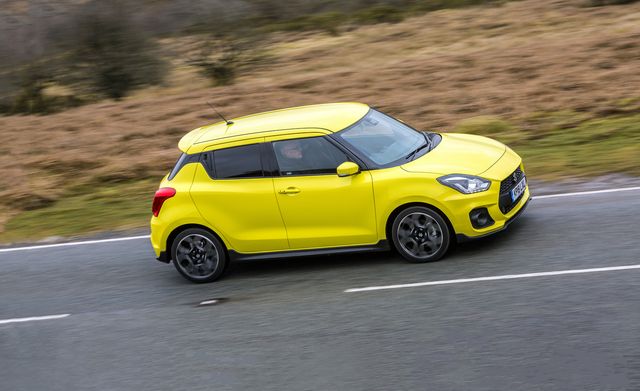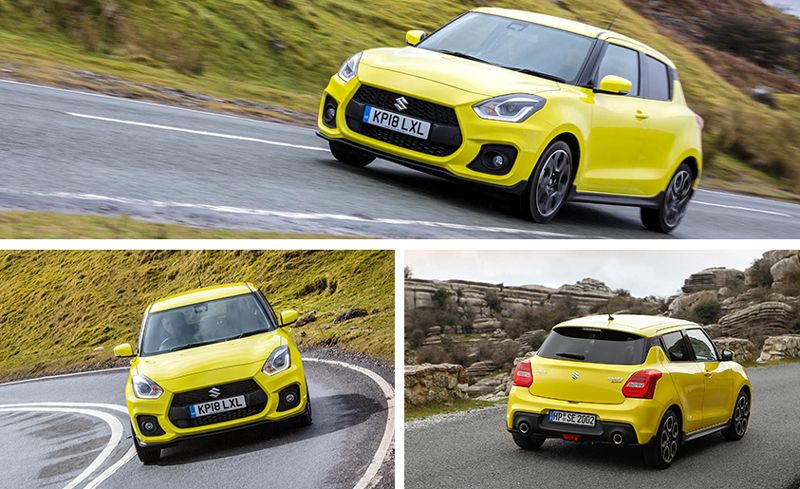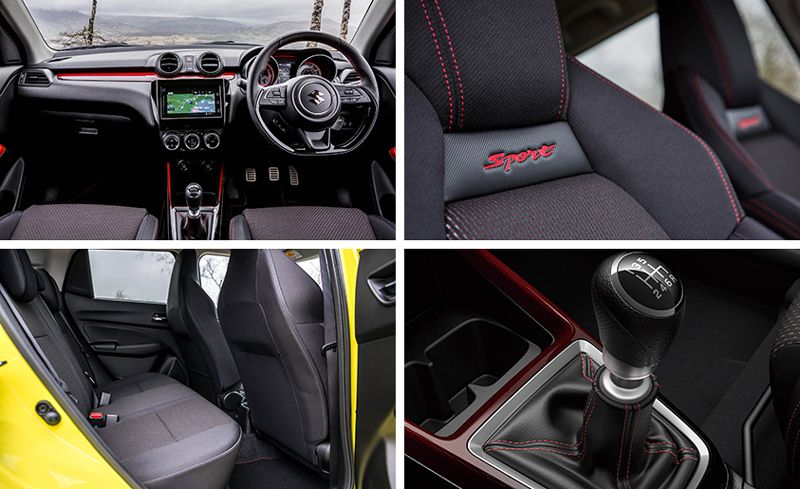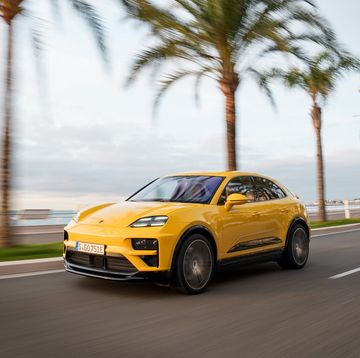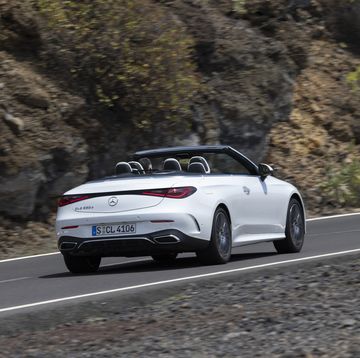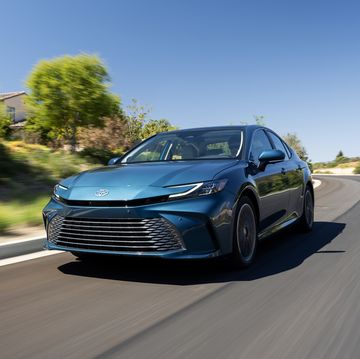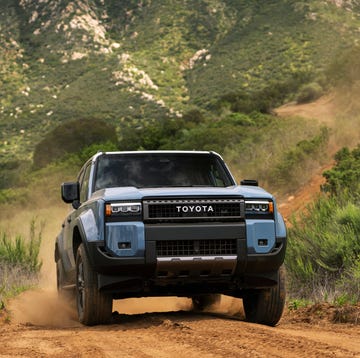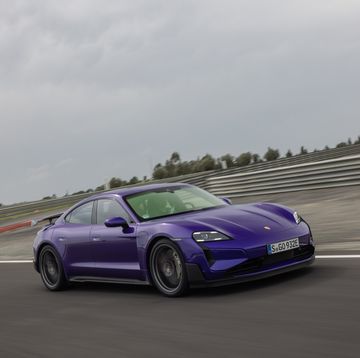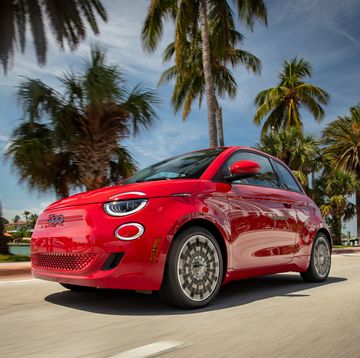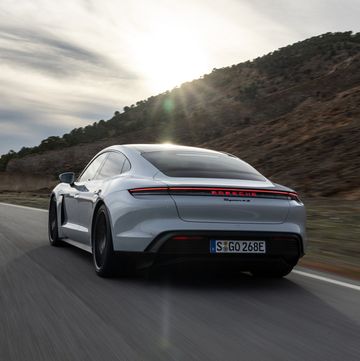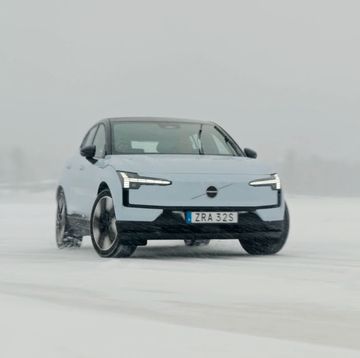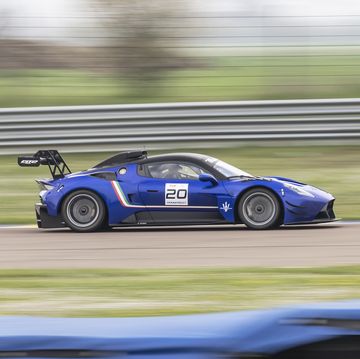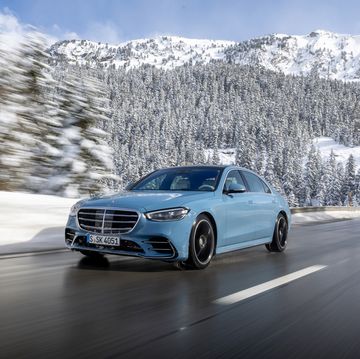Although breaking up can be hard to do, the bigger blow often comes later when you realize how successfully former flames have adapted to life without you. Suzuki gave up on selling cars in the United States back in 2012, leaving us with its motorcycles, ATVs, and marine engines. But in other regions of the world, the automobile side of Suzuki continues to do a brisk trade, and as of 2016 it is the world’s eleventh-biggest carbuilder by volume, ahead of Daimler. Its largest market is India, where the Maruti subsidiary accounts for nearly half of the automaker’s global sales, but it is still building models designed to appeal in Japan and Europe.
One of those is the new third generation of the Swift Sport. We drove a Euro-spec example on the launch event in southern Spain—it has just gone on sale in Europe after its introduction at the Frankfurt auto show last fall—but the version that has already been sold in Japan for six months is nearly identical. And on the basis of our time driving some of Andalusia’s most spectacular mountain roads, we can report that Suzuki’s baby hatch confirms it is still possible to produce an entertaining car that makes only 138 horsepower.
The power output of the Swift’s turbocharged 1.4-liter inline-four looks modest by segment standards, but it represents an upgrade over the rev-happy 134-hp naturally aspirated 1.6-liter used in the previous model. Torque is the biggest change, with the peak 170 lb-ft available from just 2500 rpm; both numbers are slightly better than those offered by the base three-cylinder Mini Cooper. Yet in terms of raw physics, the Swift isn’t far from being a front-driven equivalent to the Mazda MX-5 Miata, with Suzuki’s mass-saving measures translating to a claimed curb weight of just 2150 pounds. That’s 154 pounds less than the last version and—more impressively—identical to Mazda’s claim for its 1.5-liter Euro-spec MX-5, the equivalent of our base Miata but with a smaller engine making just 129 horsepower. Pretty impressive for a four-door five-seater with a roof.
The styling is less cutesy than that of the similarly proportioned Mini hatchback, and there’s no doubting that the basic Swift is built down to a price. As the range-topping model, the Sport is distinguished by 17-inch diamond-cut aluminum wheels plus some questionable faux-carbon-fiber trim on the front and rear bumpers. It also gets twin tailpipes and a lippy little spoiler at the top of the rear hatch. Other colors beyond the radioactive Champion Yellow of the launch cars include blue, red, and the usual black, white, and gray. The cabin has lots of hard-feeling plastic trim and some more pretend carbon, but in Euro-spec form the Sport boasts generous standard equipment including adaptive cruise control, a collision-mitigation system, automatic climate control, and a 4.2-inch central touchscreen. The seating position is high, but the nicely bolstered chairs are comfortable and offer a good range of adjustment.
Hot-Hatch Demeanor
The Sport’s driving experience is as unpretentious as the car itself yet entertaining enough to earn comparison with some of the hallowed European hot hatches of yore. Straight-line performance feels livelier than the quoted 8.1-second zero-to-62-mph time suggests, and we suspect Suzuki is being conservative. The engine, which Suzuki calls Boosterjet, doesn’t hide its small displacement at low revs, but once the turbo is spinning it pulls hard and with a fizzy soundtrack that suits the car well. The thrust tails off approaching the 6000-rpm redline, but we suspect that the Sport could get north of 60 mph in a time much closer to seven seconds than eight—the heavier, less powerful Mini did it in 7.3 seconds in our testing, after all.
Cruising refinement isn’t a strong suit of the Swift Sport, with its engine sounding loud even under gentle use. We also found pronounced transmission whine in our sample car and some rattling trim. On some of the smaller, twisting roads near Ronda, though, such complaints fade to insignificance. The Swift Sport relishes hard use. The modesty of the engine’s output means it can be pushed harder than more powerful alternatives, and it can give its all without any of the torque steer that often results from combining high output and front-wheel drive.
The Swift’s electrically assisted steering feels too heavy in the first couple of degrees of rotation but becomes much more natural with more lock. The suspension maintains body discipline on choppy surfaces and feels soft for a performance hatch, and it can lean pretty aggressively in hard corners. But front-end grip is high, and the Swift is happy to carry serious momentum through fast curves and exhibits minimal understeer in slower ones. The rear axle normally follows the front faithfully, but ease off the throttle in tighter turns and the car’s line sharpens. The brakes bite well and, on our test car, resisted fade even when worked hard enough to fill the cabin with the pungent aroma of refried pads. And the standard six-speed manual is a peach (there’s no other gearbox option), with a light, mechanical action that makes it a joy to use.
Less Enticing in Mundane Matters
Beyond the driving experience, the argument for the Swift wanes. The active-safety systems are hyperactive, with the forward-collision-warning alarm sounding needlessly in urban traffic and the lane-keeping assist sending cautionary vibrations to the steering wheel even when the Swift was planted in the middle of its lane—we had to turn it off. The tiny 9.8-gallon fuel tank also is too small; under the sort of hard use the car encourages, we had drained it by more than three-quarters after only 150 miles. Being sold fully loaded and without options also means a price higher than the unadorned figure for some more distinguished rivals. The Suzuki Swift Sport costs £17,999 in the United Kingdom, including the requisite value-added tax (VAT) of 20 percent, which is almost identical to the local price of a four-door Mini Cooper—and the three-cylinder Volkswagen Up GTI is fully four grand less expensive. (Without VAT, the Swift’s price is equivalent to about $20,500 at current exchange rates.)
Yet it is hard to think of a current front-drive hatchback that offers a purer dynamic experience. The swiftest Swift proves that less can be more, following the same disciplined logic that has kept the Miata sharp. It could have more horsepower, but that would require bigger brakes and a brawnier cooling system, adding unwanted mass and altering its character for the worse. The Swift Sport stands as welcome proof that minimalism means more than just leaving things off.
Specifications
SPECIFICATIONS
2018 Suzuki Swift Sport
VEHICLE TYPE
front-engine, front-wheel-drive, 5-passenger, 4-door hatchback
BASE PRICE (United Kingdom)
$20,500
ENGINE TYPE
turbocharged and intercooled DOHC 16-valve inline-4, aluminum block and head, direct fuel injection
Displacement
84 in3, 1373 cm3
Power
138 hp @ 5500 rpm
Torque
170 lb-ft @ 2500 rpm
TRANSMISSION
6-speed manual
DIMENSIONS
Wheelbase: 96.5 in
Length: 153.1 in
Width: 68.3 in
Height: 58.9 in
Cargo volume: 9 cu ft
Curb weight (C/D est): 2200 lb
PERFORMANCE (C/D EST)
Zero to 60 mph: 7.5 sec
Zero to 100 mph: 23.5 sec
Standing ¼-mile: 15.5 sec
Top speed: 130 mph
FUEL ECONOMY (C/D EST):
Combined/city/highway: 34/30/40 mpg
Our man on the other side of the pond, Mike Duff lives in Britain but reports from across Europe, sometimes beyond. He has previously held staff roles on U.K. titles including CAR, Autocar, and evo, but his own automotive tastes tend toward the Germanic: he owns both a troublesome 987-generation Porsche Cayman S and a Mercedes 190E 2.5-16.
